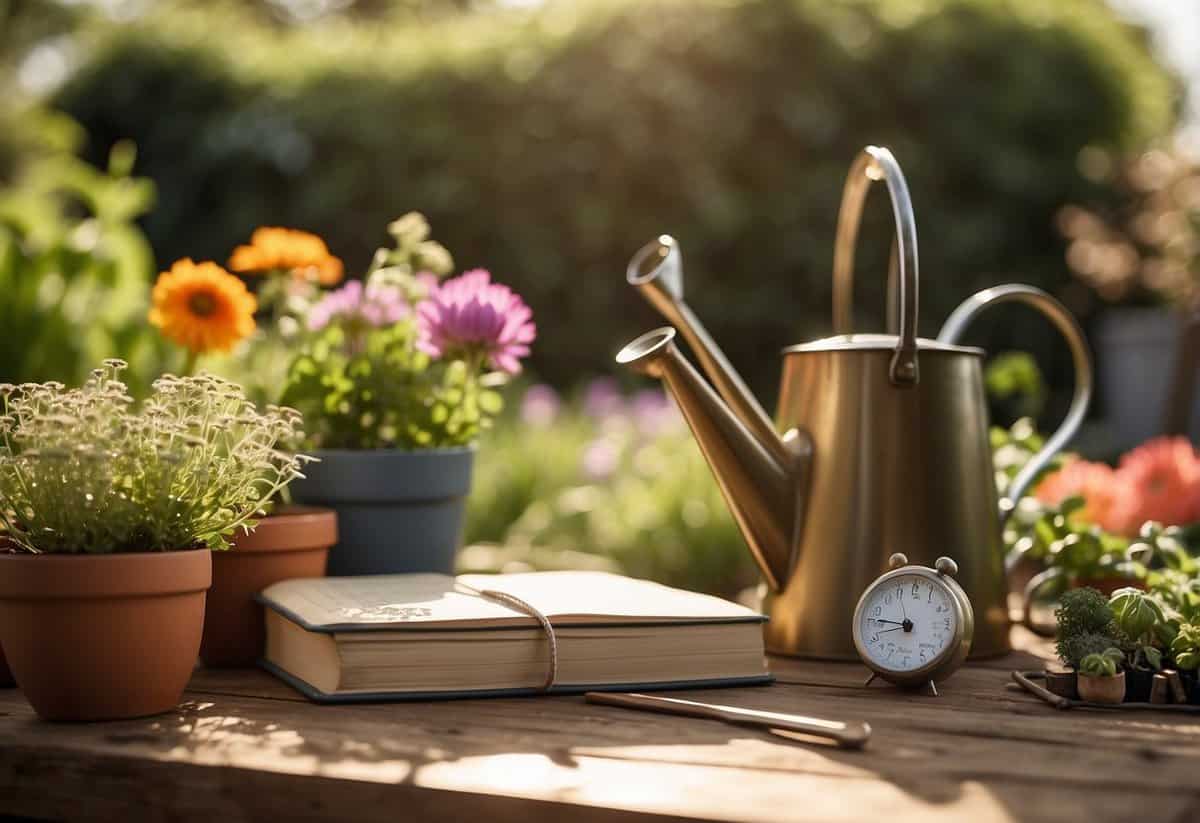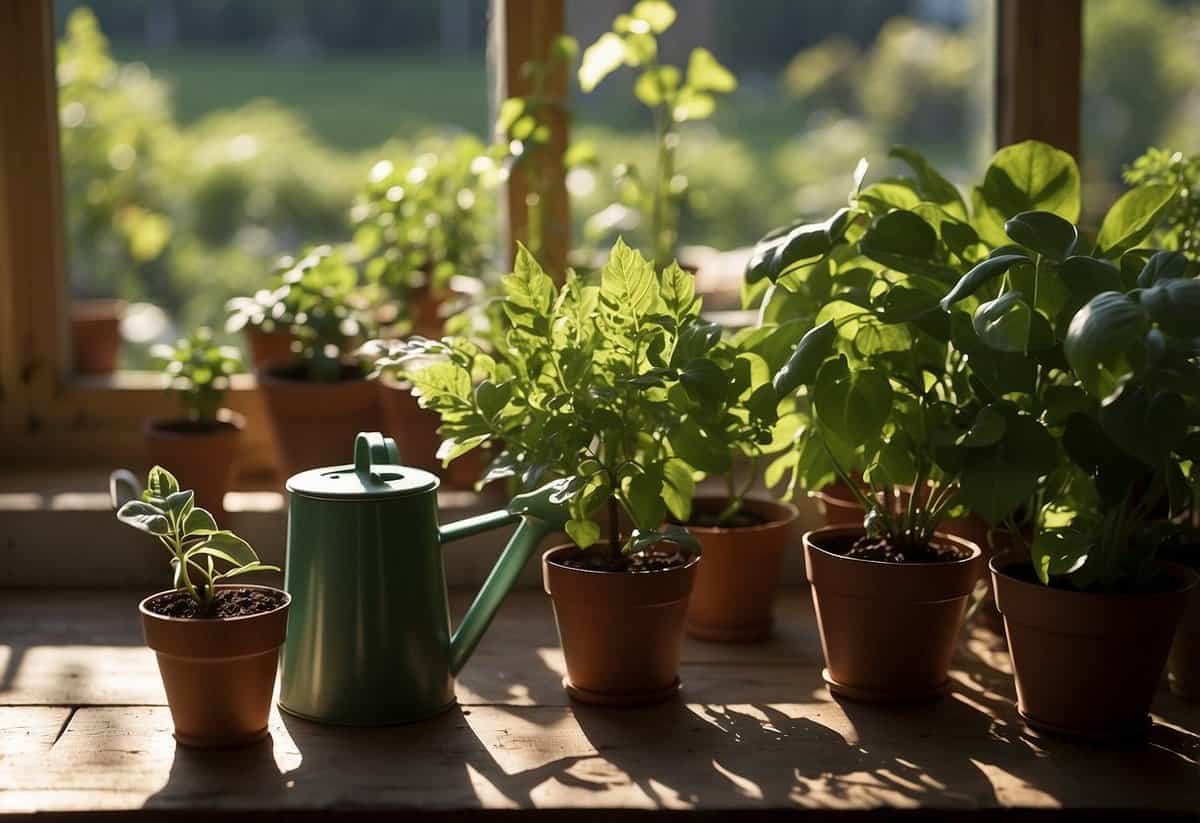Starting a Garden Tips: Easy Steps for Beginners
Thinking about starting a garden? You’ve come to the right place! Gardening can be a fun and rewarding hobby that not only provides fresh produce but also brings you closer to nature. Whether you have a spacious backyard or just a small balcony, you can grow your own vegetables and flowers with a bit of planning and effort.

What is the secret to a successful garden? It all comes down to choosing the right location, understanding your soil, and starting with easy-to-grow plants. By following a few simple steps, you’ll be on your way to creating a lush, thriving garden that you’ll enjoy throughout the seasons.
1) Choose the right location

Selecting the right spot for your garden is key. Look for a place that gets at least 6-8 hours of sunlight each day. Most vegetables need a lot of sun to grow well.
It’s also important to be near a water source. A garden close to a spigot or a rain barrel makes watering easier.
Lastly, think about the accessibility. You want your garden to be easy to reach for regular care and harvesting. A convenient location will make your gardening experience enjoyable.
2) Test your soil

Testing your soil helps you understand its nutrients and pH levels.
Use a shovel to dig about six inches deep in different spots of your garden. Mix these samples in a bucket. Remove rocks and roots.
For a DIY approach, fill a jar halfway with soil and the rest with water. Shake well and let it sit.
For more detailed instructions, you can follow this beginner’s guide to soil testing.
3) Start with Easy Plants

Pick plants that are simple to grow. Lettuce, radishes, and green beans are great choices for beginners. They grow quickly and don’t need much special care.
Tomatoes and peppers can be started from seedlings. This means you don’t need to grow them from seeds. Peas and zucchini also do well and can be directly sown into the soil.
Starting with these easy plants will boost your confidence and help you enjoy gardening right away. More about easy vegetables.
4) Use Quality Seeds

Your garden’s success starts with choosing quality seeds. High-quality seeds are more likely to germinate and grow into healthy plants. When you buy seeds, look for ones that are from a reputable supplier.
Always check the label for the packing date to ensure freshness. Stale seeds have lower germination rates. Selecting the right seeds will set a strong foundation for your garden. For more detailed tips on selecting and using quality seeds, you can visit Seed Starting Simplified.
5) Water Wisely

Watering your garden is essential, but doing it smartly can make a big difference. Aim to water early in the morning, between 4 a.m. and 8 a.m., to reduce evaporation.
Focus on the base of your plants, avoiding the leaves. Wet leaves can attract fungus.
Using mulch around your plants can help keep the soil moist longer and prevent water runoff. Consider using an irrigation system with a timer for better control.
6) Provide proper sunlight

Making sure your garden gets the right amount of sunlight is key.
Most plants need 6-8 hours of sunlight each day. Check the light requirements for each plant you choose.
Observe your garden spot throughout the day. Notice areas with full sun, partial shade, and full shade. Place sun-loving plants in the brightest spots.
For balconies or limited spaces, remember that location and sunlight are crucial.
7) Use Mulch

Mulch is great for helping retain moisture in your garden. It keeps the soil cool and reduces the need for frequent watering.
Organic mulches like wood chips or straw add nutrients to the soil as they break down. They also help prevent weeds from taking over your garden.
Avoid using rocks as mulch. According to Bob Vila, rocks can heat up quickly and harm your plants. Instead, try using dried leaves or grass clippings but let the clippings dry first to avoid matting.
8) Control Weeds

Controlling weeds is crucial for a successful garden. One of the best strategies is to apply mulch. Mulching with materials like shredded leaves or wood chips helps block weed seeds from getting sunlight.
Another effective method is covering garden beds with cardboard or black landscaping fabric. This prevents weeds from growing while keeping your plants safe.
Think about creating a right-sized garden plot. Smaller areas are easier to maintain and less likely to become overrun with weeds. Consider your time and effort when planning your garden size.
9) Know Your Plant Zone

Understanding your plant zone is key to a successful garden. Plant hardiness zones tell you which plants will thrive in your area based on climate.
To find your zone, use a plant hardiness zone map like the one from the USDA. Enter your zip code and check the map.
Planting within your zone ensures your garden will flourish with the right temperatures and conditions.
10) Rotate Crops

Rotating crops each year is essential for keeping your garden healthy. By alternating the location of your plants, you can prevent pests and diseases from settling in one spot. Moving crops also helps maintain soil nutrients.
This practice is simple. Each growing season, change the spot of each vegetable type. For example, if you planted tomatoes in one area last year, plant them in a different spot this year. This helps keep your soil rich and your plants happy.
Learn more about crop rotation benefits.
Choosing the Right Location

Picking the right spot for your garden is vital for its success. It’s important to consider how much sunlight the area gets and the quality of the soil.
Sunlight Requirements
Most vegetables need plenty of sunlight to thrive. Aim for a spot that gets at least 6-8 hours of direct sun each day. Some leafy greens, like spinach and lettuce, can grow in spots with only 4-6 hours of sun.
Choose a location away from large trees or buildings that could cast shade. South-facing gardens usually get the most sun, while east-facing ones get morning light, and west-facing spots get afternoon light. If you’re planting root vegetables, they need around 6-8 hours of sunlight.
Keeping a garden in the correct spot means planning according to the sun’s path. This can make sure your plants get the light they need to grow strong and healthy.
Soil Quality
Good soil is crucial for a healthy garden. Test your soil to see its pH level and determine if it’s more acidic or alkaline. Most vegetables prefer a slightly acidic to neutral pH, around 6.0 to 7.0.
Ensure the soil is well-draining. Waterlogged roots can lead to plant diseases. If your soil doesn’t drain well, you might need to add compost or organic matter to improve its structure.
Look for soil that is rich in nutrients. You might have to fertilize or add organic compost to boost fertility. Avoid areas with heavy clay or sandy soils, as these can be too tough or too loose for plants to establish roots properly.
Choosing the correct soil will help maintain strong and productive plants.
Preparing the Soil

To have a healthy garden, you need to start with good soil. First, test your soil. Then, add nutrients to help your plants grow strong.
Testing Your Soil
Before planting, test your soil’s pH level. This shows you how acidic or alkaline your soil is. You can buy a soil test kit from a garden store. Follow the instructions, and you’ll find out if your soil is in the right range for your plants.
Most plants grow best in soil with a pH between 6 and 7. If your soil is too acidic, add lime to raise the pH. If it’s too alkaline, add sulfur to lower it. Testing also shows you the nutrient levels, so you know what else to add.
This step is important. It helps you understand what your soil needs to support plant growth. Then you can create the best conditions for a thriving garden.
Adding Nutrients
Once you know your soil’s pH and nutrient levels, it’s time to add what’s needed. Organic matter like compost or aged manure is great for this. It improves soil structure, supplies nutrients, and helps with water drainage.
Mix these materials into the top 4 to 6 inches of soil. Use a garden fork or tiller to make sure it’s evenly spread. For a vegetable garden, you might need to add these materials each year.
Adding nutrients keeps your soil healthy. Your plants will have the food they need to grow. For best results, add a combination of compost and well-balanced fertilizers. This ensures that your garden has everything it needs to flourish.







